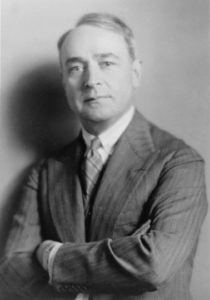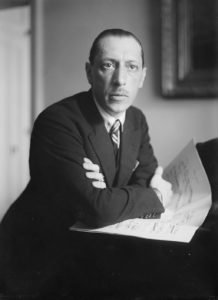
In the summer of 1929, the conductor Serge Koussevitzky was making plans for the 50th anniversary season of the Boston Symphony, for which he served as music director. A champion of contemporary music, he decided to mark the occasion by commissioning a symphony from one of the world’s leading composers: Igor Stravinsky.
Returning to the Fold
Stravinsky, however, did not want to write a symphony, at least not one in the traditional mold. Though Stravinsky had strayed from the Russian Orthodox faith of his childhood as a young adult, in the late 1920s he returned to religion with renewed devotion. Many of his friends also became more religious at this time, and he also likely wanted to reconnect with the traditions of old Russia, from which he was now permanently exiled as a result of the Red victory in the civil war. His personal life had also been troubled by his wife Catherine’s chronic tuberculosis and his long affair with Vera Sudeikin, who would later become his second wife after Catherine’s passing years later.

Thus the symphony for Koussevitzky would be a Symphony of Psalms, a choral work based on the Latin Vulgate translation of the bible. Stravinsky may have chosen the Catholic Latin text over an Orthodox Slavonic one because instrumental accompaniment was forbidden in Orthodox liturgical music. There was also the practical consideration that singers in the West would have been far more familiar with Latin. He would complete it during the summer of 1930 in the south of France.
A New Sound
Though Stravinsky is still best known for his wild, revolutionary ballet The Rite of Spring, he had by this point undergone a profound stylistic change. His new, neoclassical style was marked by clarity and restraint, and his Symphony of Psalms would exemplify these characteristics. The work’s unconventional scoring, which omits violins, violas and clarinets, produces bright, clear sonorities that perfectly accompany his unsentimental but profoundly sincere expression of faith.
Stravinsky chose specific verses from psalms 38, 39 and 150 to give the work a ritualistic quality. The chorus plays the role of a community of believers who begin separated from God, but end reunited with him. The piece begins with a striking chord and a run for oboe and bassoon that instantly creates an atmosphere of anxiety:
After a wailing cello solo, the chorus enters, singing “Hear my prayer, O Lord…give ear to my tears.” The first movement builds to a fortissimo statement for the full ensemble at the words “remitte mihi”—“forgive me.”
The second movement takes the form of a double fugue reminiscent of the music of Bach (adding a Protestant influence to this multi-denominational piece). A fugue is a type of musical composition in which many different, independent voices must be woven together harmoniously. Unity is provided by a main idea that is passed from one voice to another. The movement begins with the oboe intoning the main idea of the first fugue; the second fugue begins when the chorus introduces a new main idea.
In a contemplative mood, the chorus tells us that God “heard my prayers, and brought me out of the pit of misery.” They take on a prophetic tone at the movement’s climactic conclusion, in which ideas from both fugues are combined as the chorus sings “And he put a new canticle into my mouth, a song to our God. Many shall see, and shall fear: and they shall hope in the Lord.”
Without pause, the second movement goes into the finale, which begins with a gentle “Alleluia” from the chorus. This movement, representing the “new canticle,” is a setting of the complete text of Psalm 150, which has long been popular with composers for its exhortation to praise God with trumpets, cymbals, chorus and organ. After the “Alleluia,” the tenors and basses sing a memorable setting of the word “laudate”—“praise”—creating an atmosphere of heavenly tranquility. The music becomes livelier as the chorus begins singing about the various musical instruments mentioned in the psalm. The work ends with a quiet, serene coda that fades away to the steady, processional accompaniment of the timpani. —Calvin Dotsey
Don’t miss Stravinsky’s Symphony of Psalms March 29, 30 & 31. Get tickets and more information at houstonsymphony.org.



